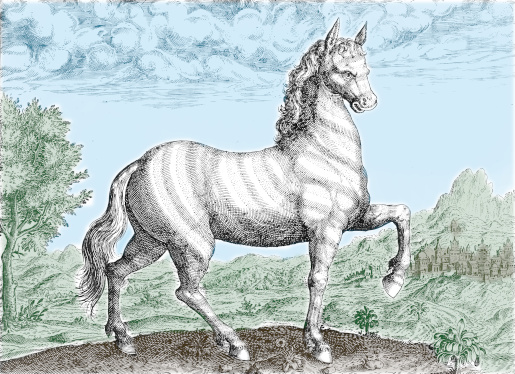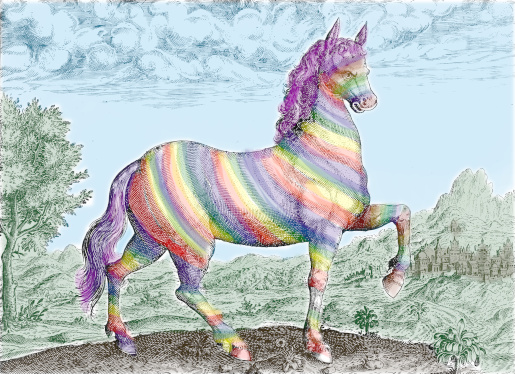Behold the zebra. No animal is so easily recognized today; every child of four can point out a zebra in a book.
But suppose you had never seen a zebra. Suppose you had only heard a description of it. You have been told that it is a striped horse; that the stripes are black and white and brown; that they are arranged on the side of the animal proceeding from the back down toward the breast in hemicycle fashion; that the head and legs are striped as well. This is not a bad description of the zebra (except, arguably, for the brown stripes; but zebras do come in multiple patterns).
Now you are told to draw a zebra from that description. What will you come up with?
Well, this, of course.
This is how the zebra was imagined by the celebrated de Bry brothers for a book about the Congo in 1598. Given the information they had to work with, it is not at all a bad guess.
Now, many owners of luxury illustrated books in the Renaissance had the engravings hand colored. Suppose you were given the assignment of coloring this engraving. You have only the engraving to work from. The description of the animal is on the same page, but it is in Latin, which is Greek to you. How will you color it?
First, of course, you will shade the landscape with light watercolor washes, like this:
So far the results are typical. But we have avoided the problem. What are we to do with the zebra? We know only what we see in the engraving, and we have to imagine what the colors might be.
Under these conditions, Dr. Boli can imagine only one outcome:



